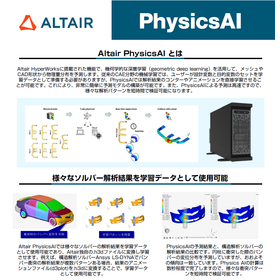[Analysis Case] Electromagnetic Field Analysis of Wireless Power Transfer (Electromagnetic Induction Method)
Introduction of analysis examples of wireless power transmission using electromagnetic induction method.
In recent years, research and development of wireless power transmission technology, which transmits power wirelessly, has been conducted. First, as a basic model, we consider two coils as shown in the left diagram. The transmitting coil and the receiving coil are arranged vertically, and circuit elements are connected to the coils. On our company website, we introduce analysis examples of wireless power transmission using electromagnetic induction. For more details, please refer to the related links below. 【Case Overview】 ■ Software Used: PHOTO-EDDYjω ■ Analysis Results ・Self Inductance: 358.7 [uH] ・Mutual Inductance: 38.4 [uH] *For more details, please check the related links or feel free to contact us.
Inquire About This Product
basic information
For more details, please refer to the related links or feel free to contact us.
Price range
Delivery Time
Applications/Examples of results
For more details, please refer to the related links or feel free to contact us.
Company information
At Photon, we are developing "electromagnetic field analysis software" that models and simulates products and components utilizing electromagnetic phenomena on a computer. In traditional design and development environments, the process has primarily revolved around trial and error through prototyping based on the experience of engineers and experiments with prototypes. However, conducting experiments using actual prototypes and analyzing the results requires significant time and cost. Moving forward, transitioning from an experimental and prototyping-based approach to an analysis-based design approach will be a crucial challenge for improving productivity, and establishing simulation technology as the core of analysis-based design techniques will be essential. In this context, Photon is developing and providing "analysis software" focusing on electromagnetic fields, as well as heat, vibration, and sound fields. By utilizing Photon's software, efficient development and design of various industrial products can be achieved. In this way, Photon aims to support users in reducing the number of prototypes, lowering development costs, and shortening development periods in their manufacturing environments, ultimately enhancing their competitiveness.











![SOLIDWORKS 2026 New Features Seminar [Free Participation]](https://image.mono.ipros.com/public/default/object/noimage_l.gif?w=280&h=280)